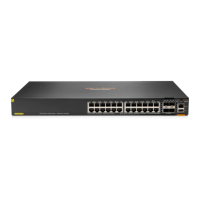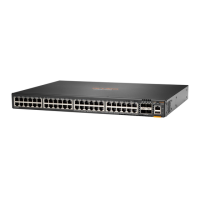238
Figure 80 Two-to-two VLAN mapping implementation
VLAN mapping configuration task list
When you configure VLAN mapping, follow these guidelines:
• To add VLAN tags to packets, you can configure both VLAN mapping and QinQ. VLAN mapping
takes effect if a configuration conflict occurs. For more information about QinQ, see
"Configuring QinQ."
• To add or replace VLAN tags for packets, you can configure both VLAN mapping and a QoS
policy. The QoS policy takes effect if a configuration conflict occurs. For information about QoS
policies, see ACL and QoS Configuration Guide.
IMPORTANT:
Use the appropriate VLAN mapping methods for the devices in the network.
To configure VLAN mapping:
Tasks at a glance Remarks
Configuring one-to-one VLAN mapping
Configure one-to-one VLAN mapping on the
wiring-closet switch, as shown in Figure 74.
Configuring many-to-one VLAN mapping
• Configuring many-to-one VLAN mapping in a
net
work with dynamic IP address assignment
• Configuring many-to-one VLAN mapping in a
net
work with static IP address assignment
Configure many-to-one VLAN mapping on the
campus switch, as shown in Figure 74.
Configuring one-to-two VLAN mapping
Configure one-to-two VLAN mapping on PE 1 and
PE 4, as shown in Figure 75, through which traffic
from customer networks enters the service provider
networks.
Configuring two-to-two VLAN mapping
Configure two-to-two VLAN mapping on PE 3, as
shown in Figure 75,
which is an edge device of the
SP 2 network.
Configuring one-to-one VLAN mapping
Configure one-to-one VLAN mapping on the customer-side ports of wiring-closet switches
(see Figure 74) to isolate traf
fic of the same service type from different homes.
Before you configure one-to-one VLAN mapping, create the original VLAN and the translated VLAN.
To configure one-to-one VLAN mapping:

